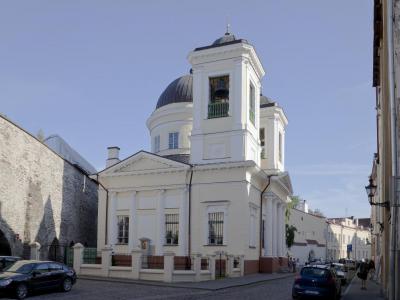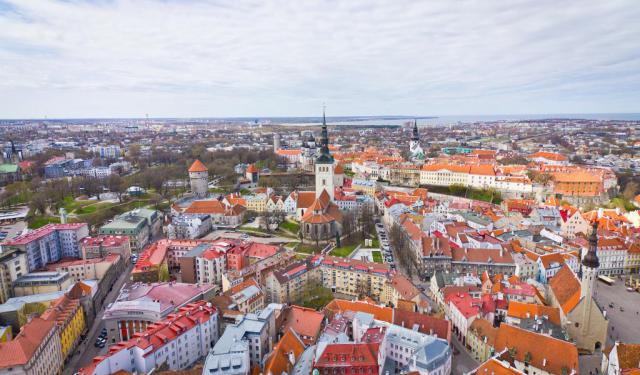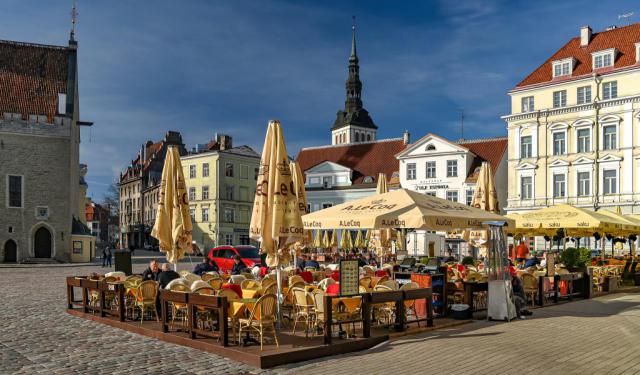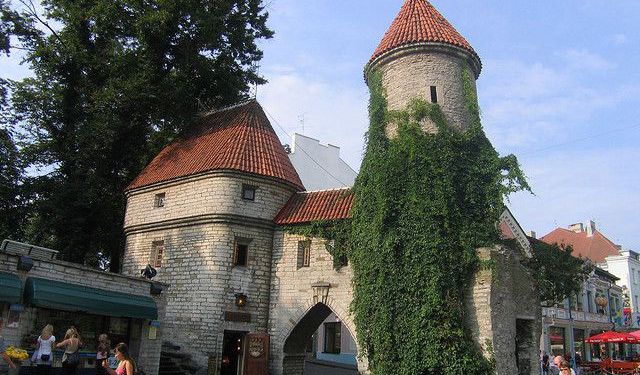St. Nicholas' Orthodox Church, Tallinn
Saint Nicholas Church stands as a historic former church situated in Tallinn. It was originally devoted to Saint Nicholas, revered as the patron saint of fishermen and sailors. This architectural gem, dating back to the 13th century, endured partial destruction during the Soviet bombing of Tallinn in World War II. Subsequently, concerted efforts were made to restore it, and today, it serves as the home to the Niguliste Museum, a branch under the umbrella of the Art Museum of Estonia. The museum's primary focus is on ecclesiastical art spanning from the Middle Ages onwards.
The church's origins trace back to the years 1230 to 1275 when it was founded and constructed by Westphalian merchants who arrived from Gotland in the 13th century. At the time, Tallinn lacked fortifications, prompting the church to incorporate heavy bars to secure entrances, as well as openings and concealed areas for sheltering refugees. However, as Tallinn's fortifications were completed in the 14th century, with the town wall encompassing the church and settlement in 1310, Saint Nicholas Church relinquished its defensive role and transformed into a typical medieval parish church.
Between 1405 and 1420, the church underwent alterations, resulting in its present-day appearance. The central aisle was elevated to include a clerestory above the side aisles, adopting the architectural style known as a basilica. In 1515, the tower was extended in height and crowned with a late-Gothic spire. During the late 17th century, efforts were made to fortify and reinforce the tower. The original spire was replaced with a Baroque spire featuring airy galleries, which was gradually heightened over the course of several centuries. Presently, the tower stands at an impressive height of 105 meters (344.5 feet).
Remarkably, Saint Nicholas Church retained its original character amidst the iconoclastic fervor brought about by the Protestant Reformation in 1523. The church's congregation took measures to protect it by sealing its locks with molten lead, thwarting the efforts of those seeking to deface or damage it.
The church's origins trace back to the years 1230 to 1275 when it was founded and constructed by Westphalian merchants who arrived from Gotland in the 13th century. At the time, Tallinn lacked fortifications, prompting the church to incorporate heavy bars to secure entrances, as well as openings and concealed areas for sheltering refugees. However, as Tallinn's fortifications were completed in the 14th century, with the town wall encompassing the church and settlement in 1310, Saint Nicholas Church relinquished its defensive role and transformed into a typical medieval parish church.
Between 1405 and 1420, the church underwent alterations, resulting in its present-day appearance. The central aisle was elevated to include a clerestory above the side aisles, adopting the architectural style known as a basilica. In 1515, the tower was extended in height and crowned with a late-Gothic spire. During the late 17th century, efforts were made to fortify and reinforce the tower. The original spire was replaced with a Baroque spire featuring airy galleries, which was gradually heightened over the course of several centuries. Presently, the tower stands at an impressive height of 105 meters (344.5 feet).
Remarkably, Saint Nicholas Church retained its original character amidst the iconoclastic fervor brought about by the Protestant Reformation in 1523. The church's congregation took measures to protect it by sealing its locks with molten lead, thwarting the efforts of those seeking to deface or damage it.
Want to visit this sight? Check out these Self-Guided Walking Tours in Tallinn. Alternatively, you can download the mobile app "GPSmyCity: Walks in 1K+ Cities" from Apple App Store or Google Play Store. The app turns your mobile device to a personal tour guide and it works offline, so no data plan is needed when traveling abroad.
St. Nicholas' Orthodox Church on Map
Sight Name: St. Nicholas' Orthodox Church
Sight Location: Tallinn, Estonia (See walking tours in Tallinn)
Sight Type: Religious
Guide(s) Containing This Sight:
Sight Location: Tallinn, Estonia (See walking tours in Tallinn)
Sight Type: Religious
Guide(s) Containing This Sight:
Walking Tours in Tallinn, Estonia
Create Your Own Walk in Tallinn
Creating your own self-guided walk in Tallinn is easy and fun. Choose the city attractions that you want to see and a walk route map will be created just for you. You can even set your hotel as the start point of the walk.
Tallinn Introduction Walking Tour
Estonia’s capital Tallinn is the country’s largest city and cultural hub. One of the biggest ports on the Baltic Sea, the area has been known for its convenient harbor since as early as the 10th century. Owing to its strategic location for trade between Russia and Scandinavia, the Kingdom of Denmark laid claim on this land in 1219. The city itself, first mentioned in 1154, was incorporated in... view more
Tour Duration: 2 Hour(s)
Travel Distance: 4.1 Km or 2.5 Miles
Tour Duration: 2 Hour(s)
Travel Distance: 4.1 Km or 2.5 Miles
Tallinn Medieval Old Town
The Old Town of Tallinn is a UNESCO World Cultural Heritage site since 1997. The area emerged in the 13th-16th centuries when Tallinn was an active member of the Hanseatic trade league, slowly evolving into an enclosed district of colorful, ancient gabled houses, medieval towers and gates, half-hidden courtyards, and ostentatious churches.
Today it is one of the best preserved medieval towns in... view more
Tour Duration: 2 Hour(s)
Travel Distance: 1.7 Km or 1.1 Miles
Today it is one of the best preserved medieval towns in... view more
Tour Duration: 2 Hour(s)
Travel Distance: 1.7 Km or 1.1 Miles
Tallinn Old Towers and Gates
Once Europe's greatest fortified city, Tallinn had 46 defense towers and approximately 4 kilometers of surrounding walls. Today, there are 26 towers and about 2 kilometers of walls still in place, making the Old Town of Tallinn one of the best-preserved systems of medieval fortifications in Europe.
Upon entering the district through the Viru Gate, whose two picturesque, ivy-covered towers... view more
Tour Duration: 2 Hour(s)
Travel Distance: 2.8 Km or 1.7 Miles
Upon entering the district through the Viru Gate, whose two picturesque, ivy-covered towers... view more
Tour Duration: 2 Hour(s)
Travel Distance: 2.8 Km or 1.7 Miles






